APRA should wind down the CLF in 2yrs

Coolabah Capital
Recent data suggests that APRA and the RBA can shrink the Committed Liquidity Facility (CLF) faster than I had previously figured. The entire point of the CLF was to protect the liquidity of the government bond market. Given that ADIs (Authorized Deposit taking Institution, basically banks) have been voluntarily selling government bonds, it follows that the CLF is too big. The ongoing increase in turnover also supports the case for higher bank ownership of government bonds, and hence a faster closure of the CLF. I now think they can halve it in 2022, and close it in 2023.
New data has shown that that ADIs have been voluntarily selling government bonds (to move into Exchange Settlement Balances, otherwise knowns as ES Cash). In the June quarter, LCR ADIs (ADIs subject to the Liquidity Coverage Ratio regulations) sold 25bn of government bonds (20bn of Commonwealth Government bonds, or ACGBs; and 5bn of State Government Bonds, or Semis). This took their holdings of ACGBs down to their lowest level since 2018.
This was an economic decision: regulations make zero-yielding cash at the RBA a more attractive asset than government bonds for ADIs.
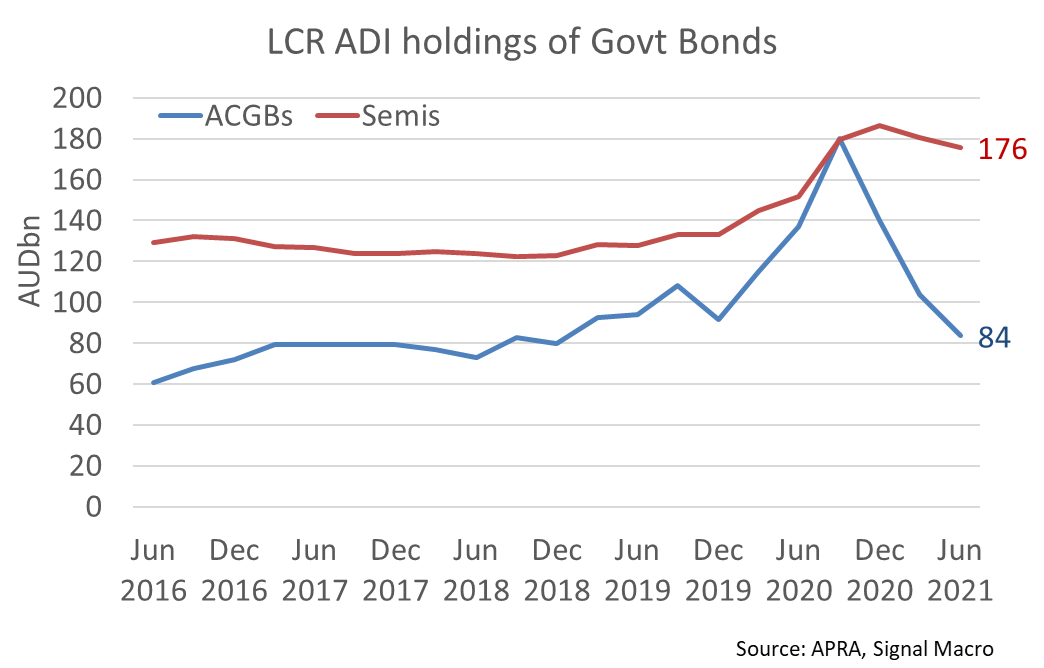
The entire purpose of the RBA’s Committed Liquidity Facility (CLF) was to protect the liquidity of the government bond market. At the time the CLF was introduced ADIs were too big relative to the stock of High Quality Liquid Assets (HQLA). Regulators were worried that the government bond market it would become illiquid if ADIs purchased too many government bonds. This would have, ironically, defeated the purpose of forcing banks to hold more liquid assets.
To prevent this from happening, the RBA essentially converted non-HQLA assets into HQLA, by guaranteeing the supply of liquidity against them, for a fee, in times of stress. When sizing this facility, the RBA first gauged the likely stock of HQLA; they next made a judgement about how many bonds could hold without damaging market liquidity; finally, they compared this number to their estimate of the system’s needs (net cash outflows plus a buffer).
The difference between the latter two – the system’s needs and the amount of government bonds ADIs might hold without damaging market liquidity – is the CLF.
You can play this logic backwards.
You might say that the RBA sets the CLF at the smallest possible size given their estimates of the size and liquidity of the government bond market. If the market is more liquid than the RBA expects, or bank holdings of government bonds are smaller than they expect, it follows that the CLF is too large.
That’s exactly what we see in the recent APRA and AOFM data. Bank holdings of government bonds are down and market liquidity is up.
APRA data shows that Bank holdings of ACGBs are around the same level as Q4’18; the ACGB market has grown by 250bn over the same period. Semi holdings are just over 50bn larger than in Q4’18; the semi market has grown by just under 150bn over that period. As a result, the share of the ACGB market held by LCR ADIs has fallen from a peak of 23%, in Q3'20 to around 10%. The LCR ADI share of the semi market has fallen from 49% to 44%.
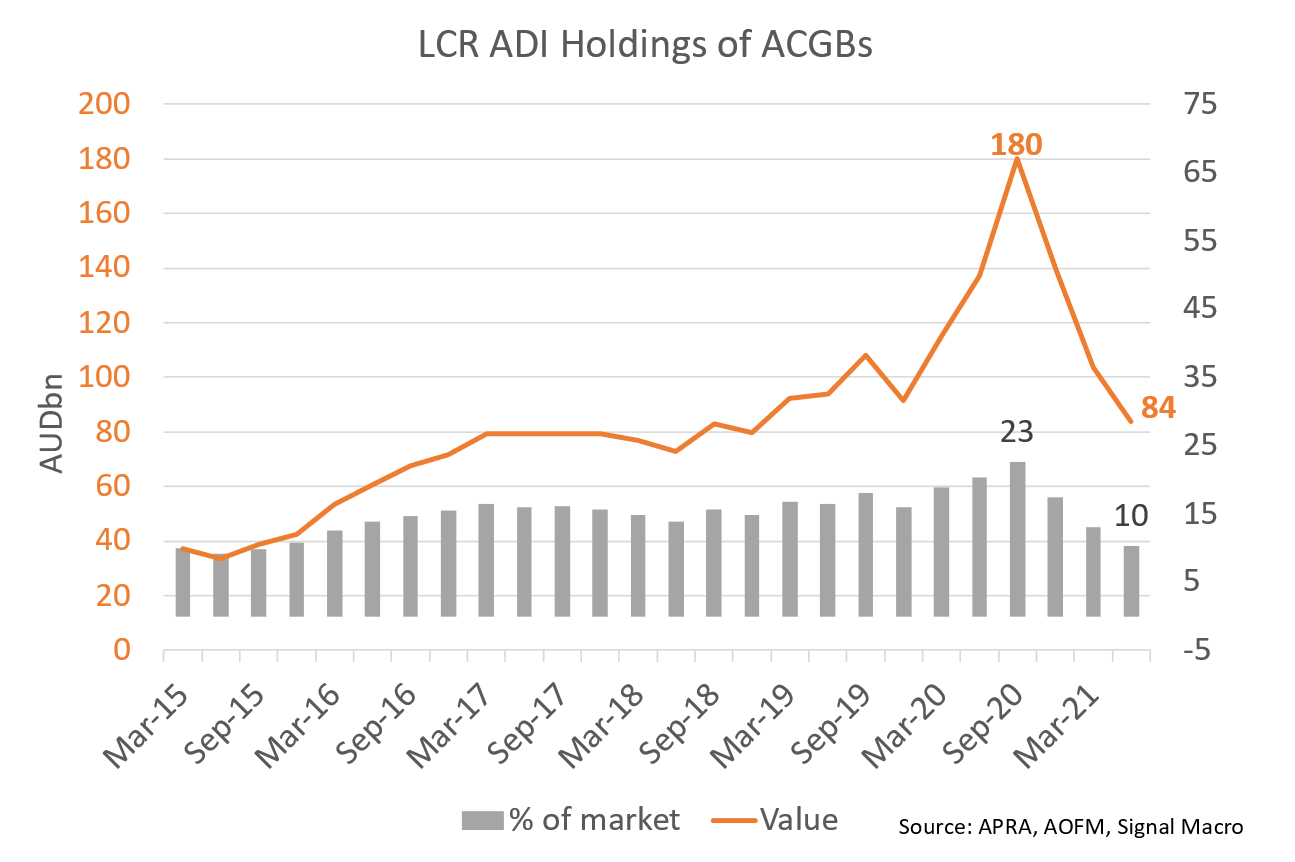
Some of this is because LCR ADIs made an economic decision to sell bonds to the RBA (as part of their QE program). However, even after adjusting the outstanding stock of bonds for RBA holdings, the 100bn decrease of LCR ADI government bonds holdings means that their share of the market has decreased by 6ppts to 28%.
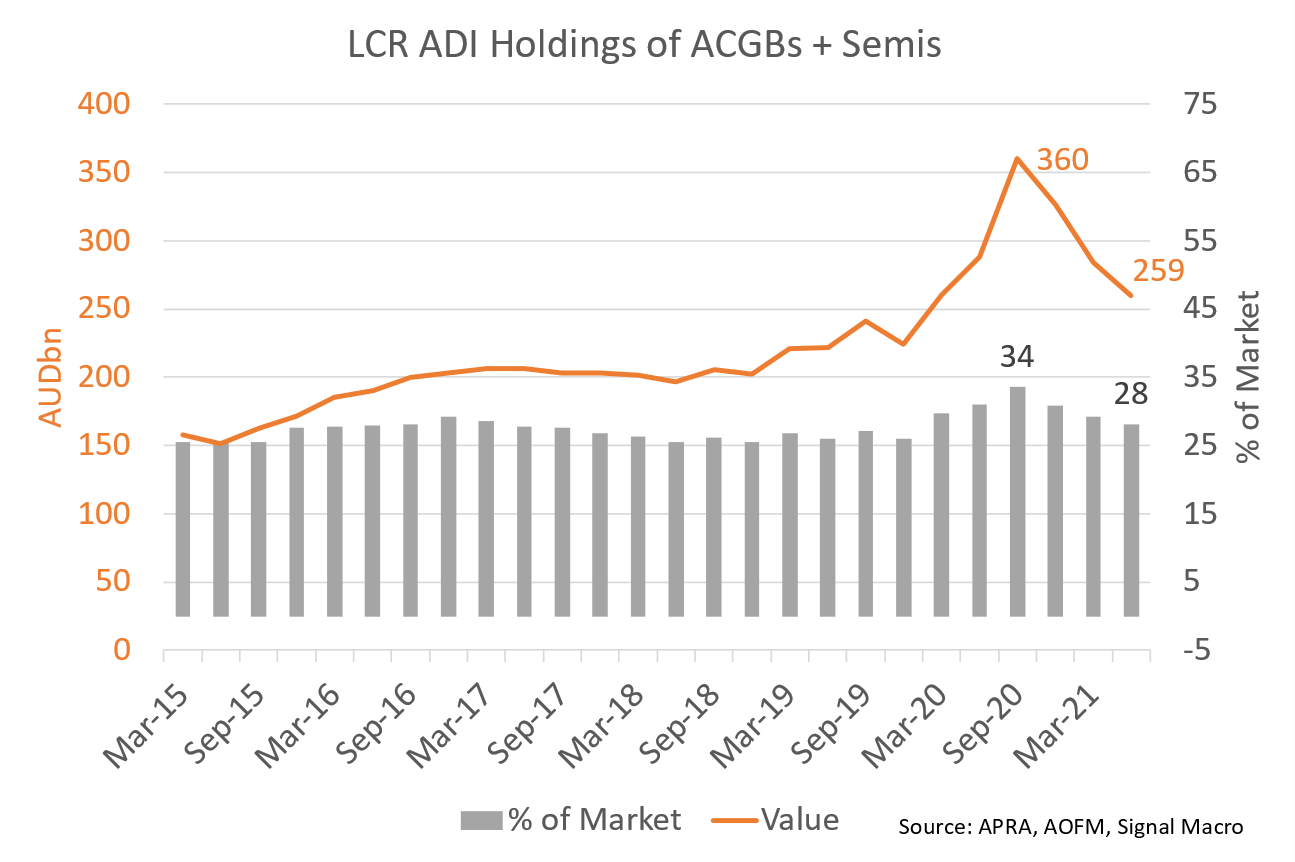
While it's true that LCR ADIs held more than 30% of the (QE adjusted) market in 2020, it didn't reduce market liquidity. Turnover in ACGBs peaked at a an annualized pace of ~350% in Q1'2020 (turnover spikes are common in shocks), and remained around 300% all year. So by this measure, bonds were more liquid in 2020, when banks held a larger share of the market. The trend is probably the most important thing for regulators: this shows that turnover has risen from around 260% prior to 2020 to around 300% today.
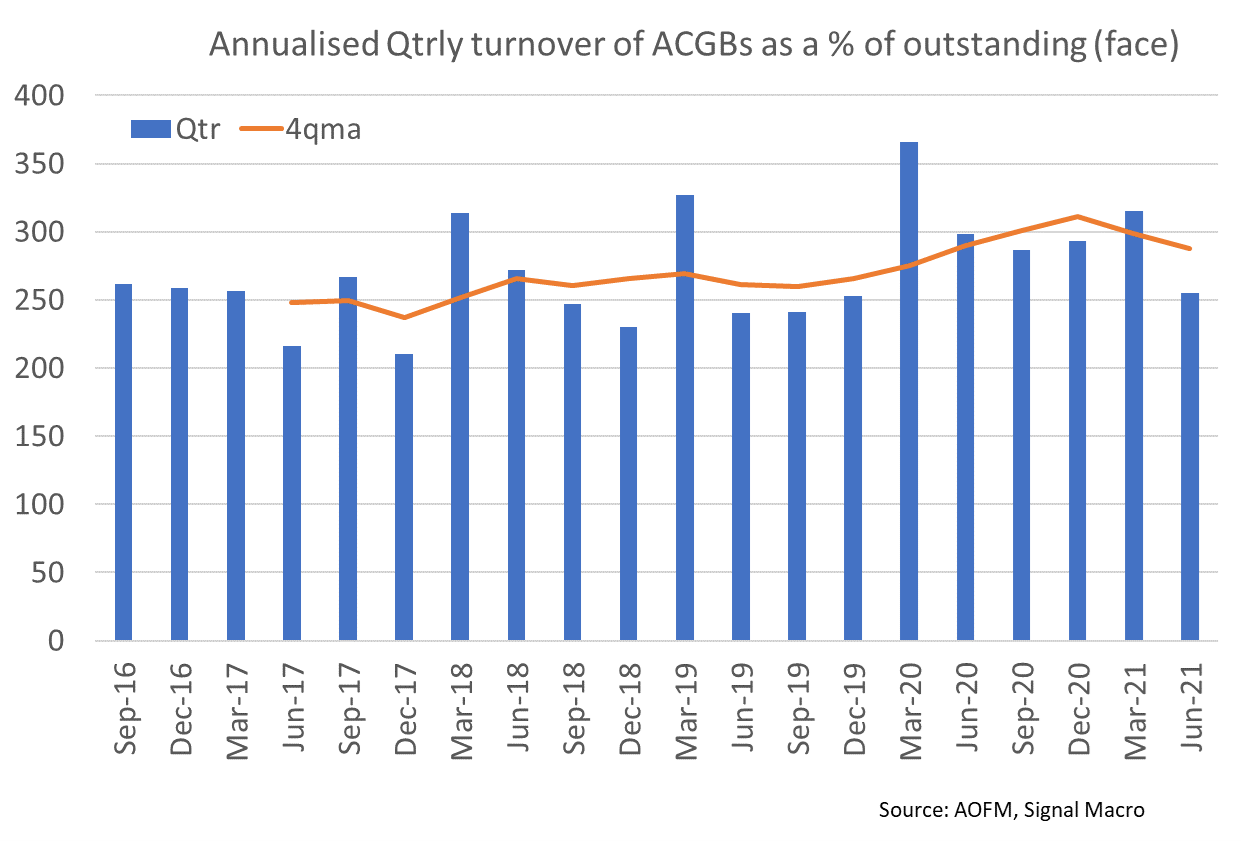
The bottom line: cut the CLF in half in 2022 & close it in 2023
The CLF was created to prevent government bond markets from getting too crowded, so as to protect their liquidity, as LCR ADIs increased their holdings of HQLA. ADI selling of government bonds is a clear signal that the CLF could be reduced without degrading the liquidity of the government bond market. If the CLF was reduced, banks would hold more government bonds.
AOFM data shows that turnover, one measure of liquidity, has been trending up despite prior high levels of bank ownership. It follows that APRA and the RBA should be untroubled by the risk that banks hold a share of the market that's above 30%. Not that that's likely -- in prior work I've shown that there's more than enough ES Cash for banks to meet their HQLA requirements while remaining below 30% of the QE-adjusted stock of bonds.
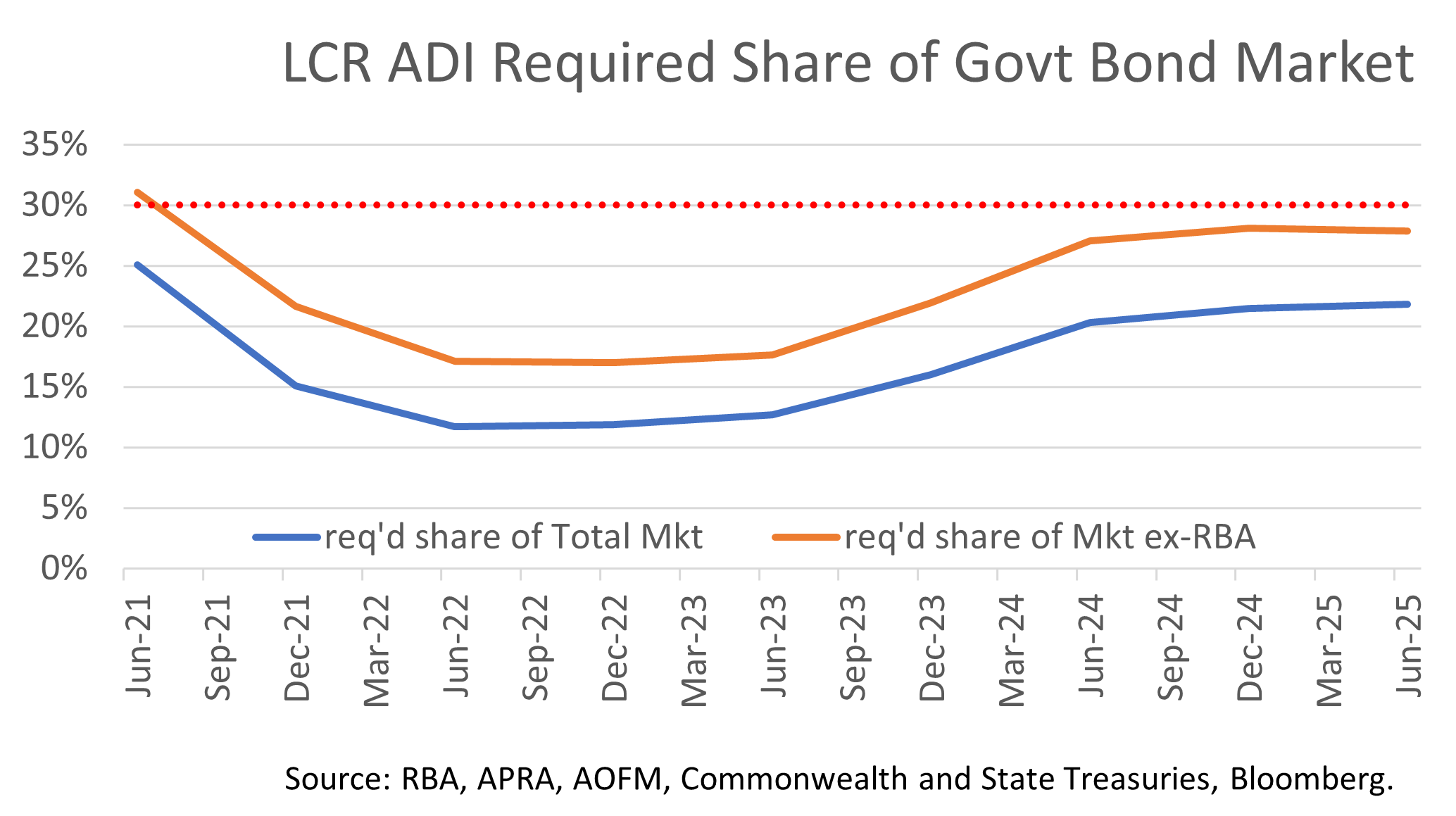
With this in mind, I now think the RBA and APRA could halve the size of the CLF (to 70bn from 139bn) in 2022, on the way to eliminating it completely in 2023.
Ideally, closing the CLF would be paired with regulatory change that reduced (or eliminated) the capital charges (APS 117) banks face holding government bonds for HQLA.
3 topics
4 stocks mentioned

Matt is a portfolio manager at Coolabah Capital, an asset manager than runs over $8 billion in fixed-income strategies. Matt has 17 years of experience on both the sell-side and buy-side. He spent most of his career (2008 to 2020) at UBS, the...

Matt is a portfolio manager at Coolabah Capital, an asset manager than runs over $8 billion in fixed-income strategies. Matt has 17 years of experience on both the sell-side and buy-side. He spent most of his career (2008 to 2020) at UBS, the...
